Prince: The Purple Revolution in Sound
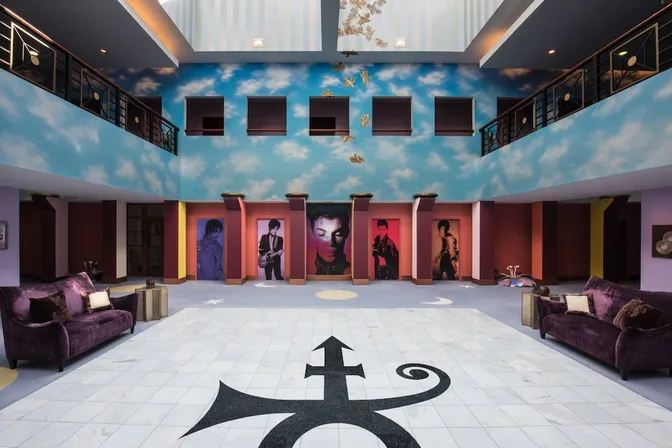 Photo Credit: Paisley Park Website
Photo Credit: Paisley Park WebsitePrince Rogers Nelson, known simply as Prince, was a musical innovator whose career spanned over four decades. His unique blend of funk, rock, R&B, and pop, coupled with his innovative recording techniques, left an indelible mark on the music industry. Let’s explore Prince’s recording history, focusing on his production work, studios, and the equipment that helped create his legendary sound.
The Early Years (1978-1982)
Prince’s early career was marked by his struggle for creative control and his rapid evolution as an artist and producer.

For You (1978)
- Producer: Prince
- Recorded: Late 1977
- Location: Record Plant Studios, Sausalito, California
- Equipment: 24-track analog recorder
- Technique: Prince played all 27 instruments on the album
This debut album showcased Prince’s multi-instrumental talents, with the artist insisting on playing every instrument himself. The production was polished but somewhat restrained compared to his later work.

Prince (1979)
- Producer: Prince
- Recorded: Spring 1979
- Location: Alpha Studios, Burbank, California
- Equipment: 24-track analog recorder
- Technique: Increased use of synthesizers and drum machines
Prince’s self-titled second album saw him gaining more creative control and developing his signature sound, blending funk, R&B, and rock elements.
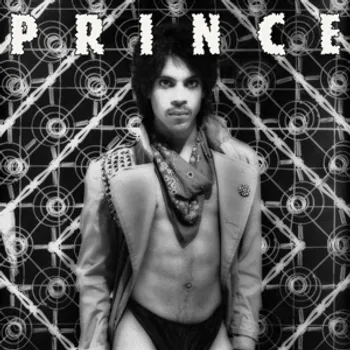
Dirty Mind (1980)
- Producer: Prince
- Recorded: Spring 1980
- Location: Prince’s home studio, Minneapolis
- Equipment: TEAC 80-8 8-track recorder
- Technique: Raw, minimalist production with heavy use of Oberheim OB-X synthesizer
This album marked a significant shift in Prince’s sound, with a rawer, more provocative style both musically and lyrically. Many tracks were essentially demo recordings, giving the album a unique, immediate feel.
The Purple Rain Era (1983-1985)
This period saw Prince achieve mainstream superstardom and push the boundaries of his artistry.
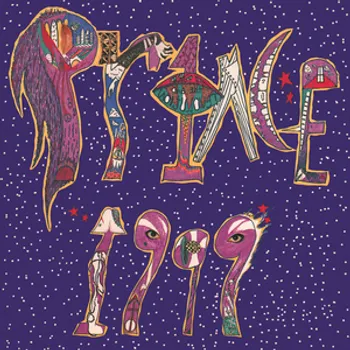
1999 (1982)
- Producer: Prince
- Recorded: January - August 1982
- Location: Kiowa Trail Home Studio, Chanhassen, Minnesota
- Equipment: Linn LM-1 drum machine, Oberheim OB-X and OB-8 synthesizers, Roland Jupiter-8 synthesizer
- Technique: Heavy use of layered synthesizers and drum machines, with Prince programming complex rhythms on the Linn LM-1
“1999” was Prince’s breakthrough album, a double-LP that catapulted him into the mainstream. The album’s futuristic sound was a perfect match for its apocalyptic themes, with Prince’s innovative use of the Linn drum machine and synthesizers creating a sonic landscape that was both danceable and thought-provoking.
The title track “1999” became an anthem for the decade, its infectious groove built on six tracks of Linn drum machine, creating a dense, intricate rhythm that was unlike anything else on the radio at the time. Prince’s use of the Oberheim OB-X synthesizer, particularly on tracks like “Little Red Corvette,” helped define the sound of 80s pop and R&B.

Purple Rain (1984)
- Producer: Prince and The Revolution
- Recorded: August 1983 - March 1984
- Location: First Avenue, Minneapolis (live tracks), Sunset Sound, Los Angeles (studio tracks), Kiowa Trail Home Studio, Chanhassen (overdubs)
- Equipment: SSL 6000 E Series console, Studer A800 24-track tape machine, Linn LM-1 drum machine, various synthesizers including Oberheim OB-8 and Yamaha DX7
- Technique: Blend of live recordings and studio overdubs. “I Would Die 4 U” and “Baby I’m a Star” were recorded live and only minimally overdubbed.
“Purple Rain” was the album that transformed Prince from a rising star to a global icon. Serving as the soundtrack to his semi-autobiographical film of the same name, the album was a perfect fusion of rock, pop, and funk, showcasing Prince’s versatility as a songwriter, performer, and producer.
The recording process for “Purple Rain” was unique, blending live performances with studio wizardry. The basic tracks for “I Would Die 4 U” and “Baby I’m a Star” were recorded live at First Avenue, the Minneapolis club featured in the film, capturing the raw energy of Prince and the Revolution’s live shows.
The album’s iconic guitar sound, particularly on the title track, was achieved using a Boss SD-1 Super Overdrive pedal and a Boss BF-2 flanger. This combination created the soaring, emotive tone that has become one of the most recognizable guitar sounds in rock history.
“When Doves Cry,” the album’s lead single, was revolutionary in its sparse arrangement, most notably for its lack of bass line - a decision Prince made to make the track stand out on the radio. This bold choice paid off, with the song becoming Prince’s first number-one hit in the US.
The success of “Purple Rain” was unprecedented. It spent 24 consecutive weeks at number one on the Billboard 200, sold over 25 million copies worldwide, and won Prince two Grammy Awards in 1985 for Best Rock Performance by a Duo or Group with Vocal and Best Score Soundtrack for Visual Media. The film’s success was further cemented when Prince won an Academy Award for Best Original Song Score.
The Paisley Park Years (1985-1992)
During this period, Prince built his own recording complex, Paisley Park, allowing him even greater creative freedom.
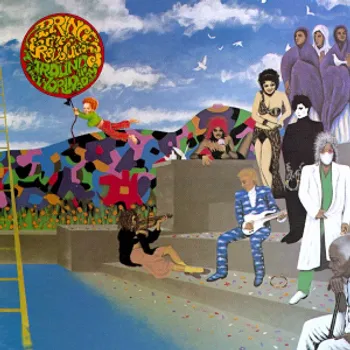
Album photo credit from Wikipedia licensed under Fair use
Around the World in a Day (1985)
- Producer: Prince and the Revolution
- Recorded: April - December 1984
- Location: Sunset Sound, Los Angeles; Mobile Audio, St. Paul; Flying Cloud Drive Warehouse, Eden Prairie, Minnesota
- Equipment: Linn LM-1 drum machine, Yamaha DX7 synthesizer, Oberheim OB-8 synthesizer, various acoustic instruments
- Technique: Psychedelic influences, increased use of acoustic instruments. “Raspberry Beret” features a prominent Yamaha DX7 electric piano sound.
Released just ten months after “Purple Rain,” “Around the World in a Day” marked a dramatic shift in Prince’s sound. Rather than capitalizing on the commercial formula that had brought him such success, Prince opted for a more experimental, psychedelic direction, drawing comparisons to the Beatles’ “Sgt. Pepper’s Lonely Hearts Club Band.”
The album’s eclectic sound incorporated Middle Eastern influences, particularly on the title track, which featured the tamboura, an Indian stringed instrument. This worldly influence was balanced with Prince’s funk roots, as evidenced by the hit single “Raspberry Beret,” which showcased the crisp, bell-like tones of the Yamaha DX7 synthesizer.

Sign o’ the Times (1987)
- Producer: Prince
- Recorded: March 1986 - January 1987
- Location: Sunset Sound, Los Angeles; Prince’s home studio, Chanhassen; Paisley Park Studios, Chanhassen
- Equipment: Fairlight CMI Series III, Linn LM-1 and LinnDrum machines, various synthesizers including Yamaha DX7 and Roland Jupiter-8
- Technique: Eclectic mix of styles, extensive use of Fairlight CMI sampler. “The Ballad of Dorothy Parker” was famously recorded on a D50 board with no EQ, contributing to its unique sound.
“Sign o’ the Times” is widely regarded as Prince’s magnum opus, a sprawling double album that showcased his mastery of multiple genres and his innovative use of emerging music technology. The album was born out of a period of intense creativity and personal change for Prince, including the dissolution of his backing band, The Revolution.
The recording process for “Sign o’ the Times” was as eclectic as the music itself. Prince utilized multiple studios, including Sunset Sound in Los Angeles and his newly completed Paisley Park complex in Minnesota. The album’s sound was shaped by Prince’s embrace of the Fairlight CMI (Computer Musical Instrument), one of the first digital sampling synthesizers. This technology allowed Prince to incorporate unique sounds and textures into his music, pushing the boundaries of what was possible in pop production.
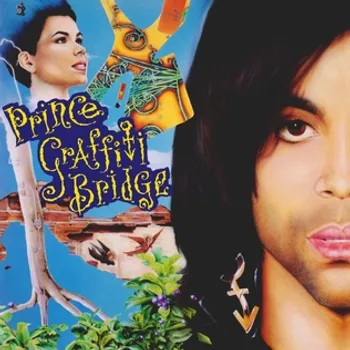
Graffiti Bridge (1990)
- Producer: Prince
- Recorded: 1989 - 1990
- Location: Paisley Park Studios, Chanhassen, Minnesota
- Equipment: SSL console, Studer A800 24-track tape machine, Linn LM-1 and LinnDrum machines, various synthesizers including Oberheim OB-8 and Yamaha DX7
- Technique: Blend of funk, rock, and gospel influences. Heavy use of guest artists and collaborators.
“Graffiti Bridge” served as both a standalone album and the soundtrack to Prince’s film of the same name, a spiritual sequel to “Purple Rain.” The project was ambitious in scope, featuring collaborations with numerous artists including Mavis Staples, Tevin Campbell, and Morris Day and The Time.
The album marked a return to the more eclectic, spiritually-infused sound that Prince had explored on “Around the World in a Day” and “Lovesexy.” The recording process took place primarily at Paisley Park Studios, Prince’s state-of-the-art recording complex that had become the center of his creative universe.
The Symbol Era and Beyond (1993-2016)
Prince’s later career was marked by his battles with record labels, his embrace of internet distribution, and his continued musical innovation.
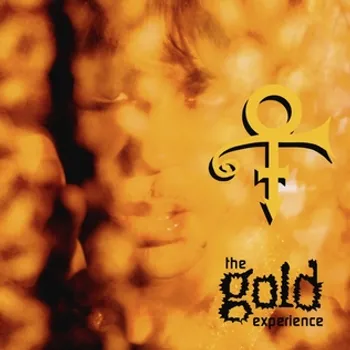
The Gold Experience (1995)
- Producer: Prince (as Symbol)
- Recorded: September 1993 - June 1995
- Location: Paisley Park Studios, Chanhassen
- Equipment: Soundcraft 3200 console, Sony PCM-3348 digital 48-track recorder, various synthesizers including Korg M1 and Roland D-50
- Technique: Blend of live instrumentation and electronic elements. Heavy use of digital recording technology.
“The Gold Experience” was released during one of the most tumultuous periods of Prince’s career. In 1993, Prince had changed his name to an unpronounceable symbol (later referred to as “The Love Symbol”) in protest against Warner Bros. Records, whom he felt were stifling his creativity by controlling his musical output.
Despite the professional turmoil, “The Gold Experience” is considered by many fans and critics to be one of Prince’s strongest albums of the 1990s. The album saw Prince exploring more contemporary R&B and hip-hop influences while maintaining his funk and rock roots.
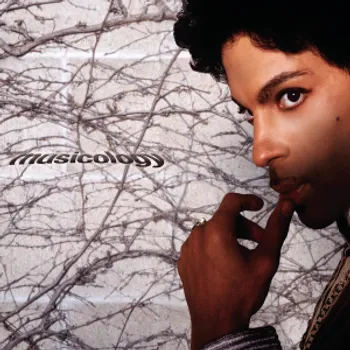
Musicology (2004)
- Producer: Prince
- Recorded: 2003 - 2004
- Location: Paisley Park Studios, Chanhassen
- Equipment: Pro Tools HD system, Neve VR Legend console, various vintage and modern instruments including Fender Rhodes and Hammond B3 organ
- Technique: Return to organic, live-band sound. Minimal use of drum machines, favoring live drums.
“Musicology” marked Prince’s return to commercial prominence after several years of releasing music independently. The album saw Prince embracing a more traditional funk and soul sound, reminiscent of his earlier work but with a mature, refined edge.
The recording process for “Musicology” was a departure from Prince’s recent albums. Instead of relying heavily on electronic instruments and production techniques, Prince opted for a more organic, live-band sound. The album was recorded primarily live in the studio, with minimal overdubs, to capture the energy and interplay of Prince’s stellar backing band.

Art Official Age (2014)
- Producer: Prince, Joshua Welton
- Recorded: 2013 - 2014
- Location: Paisley Park Studios, Chanhassen
- Equipment: Pro Tools HDX system, SSL AWS 900+ console, various modern production software including Native Instruments Maschine
- Technique: Blend of futuristic electronic production and classic Prince funk. Heavy use of digital processing and effects.
“Art Official Age” was one of Prince’s final studio albums and demonstrated his continued willingness to experiment with new sounds and production techniques. Released simultaneously with “PlectrumElectrum” (an album recorded with his backing band 3rdEyeGirl), “Art Official Age” saw Prince embracing modern electronic production while maintaining his signature funk and R&B style.
The album’s futuristic concept was reflected in its sound, with Prince and co-producer Joshua Welton making extensive use of digital processing and effects. Tracks like “Clouds” and “Funknroll” blended Prince’s trademark funk with elements of EDM and modern R&B, creating a sound that was both familiar and forward-looking.
Prince’s Mixing & Musical Techniques
Prince’s innovative approach to recording and mixing was a key factor in his success as a producer. He was known for his meticulous attention to detail, often using a wide range of equipment and techniques to achieve his signature sound. Here are some of the most notable techniques and equipment that Prince used in his production work:
1. “When Doves Cry” (Purple Rain, 1984):
- Famous for its lack of bass line, a bold mixing decision that made the track stand out on radio.
- Prince removed the bass track to make the song sound different from anything else on the radio at the time.
2. “Kiss” (Parade, 1986):
- Minimalist mix with dry, upfront vocals.
- Heavy use of guitar muting and percussive elements to create a sparse, funky sound.
3. “The Ballad of Dorothy Parker” (Sign o’ the Times, 1987):
- Famously recorded on a Yamaha console with no EQ, resulting in a muffled, underwater sound that became a distinctive feature of the track.
4. Linn LM-1 Drum Machine:
- Prince was known for layering multiple Linn drum machine tracks to create complex, unique rhythms.
- He often pitched the drum sounds up or down to create new tones.
5. Vocal Layering:
- Prince frequently used multiple layers of his own vocals, often pitching them up or down to create distinct characters within a song.
6. “Raspberry Beret” (Around the World in a Day, 1985):
- Notable for its use of the Yamaha DX7 synthesizer for the distinctive bell-like sounds.
7. Reverb and Delay:
- Prince often used minimal reverb on his vocals, preferring a dry, upfront sound.
- When he did use reverb or delay, it was often as a specific effect rather than a general wash.
8. Guitar Tones:
- Prince’s guitar solos often featured heavy use of effects pedals, particularly the Boss SD-1 Super Overdrive and Boss BF-2 flanger.
9. Fairlight CMI:
- On “Sign o’ the Times,” Prince made extensive use of the Fairlight CMI for sampling and creating unique sounds.
10. Live Recording:
- Many of Prince’s tracks were recorded live in the studio with minimal overdubs to capture the energy of a live performance.
11. Drum Sound:
- Prince was known for his tight, punchy drum sounds, often achieved through close-miking techniques and careful EQ.
12. Synth Bass:
- In many of his 80s recordings, Prince used synthesizer bass lines that cut through the mix, often using the Oberheim OB-8 or Yamaha DX7.
These techniques could be woven into the descriptions of specific albums or eras in Prince’s career, providing insight into his evolving approach to recording and mixing. For example:
“On ‘Purple Rain,’ Prince showcased his innovative mixing techniques. The album’s lead single, ‘When Doves Cry,’ famously lacks a bass line - a bold decision that made the track stand out on radio and demonstrated Prince’s willingness to break conventional mixing rules for artistic effect.”
Awards and Accolades
Grammy Awards:
- 1985: Best Rock Performance by a Duo or Group with Vocal for “Purple Rain”
- 1985: Best Score Soundtrack for Visual Media for “Purple Rain”
- 1987: Best R&B Performance by a Duo or Group with Vocal for “Kiss”
- 2005: Best Male R&B Vocal Performance for “Call My Name”
- 2008: Best Male R&B Vocal Performance for “Future Baby Mama”
- 2008: Best Traditional R&B Vocal Performance for “Somewhere Here on Earth”
- 2011: Best R&B Vocal Performance for “Satisfied”
Academy Awards:
- 1985: Best Original Song Score for “Purple Rain”
Golden Globe Awards:
- 1985: Best Original Song for “The Song of the Heart” from “Happy Feet”
American Music Awards:
- 1985: Favorite Pop/Rock Album for “Purple Rain”
- 1985: Favorite Soul/R&B Single for “When Doves Cry”
- 1985: Favorite Soul/R&B Album for “Purple Rain”
- 1985: Favorite Pop/Rock Male Artist
- 1985: Favorite Soul/R&B Male Artist
- 1986: Favorite Pop/Rock Male Artist
- 1986: Favorite Soul/R&B Male Artist
- 1986: Favorite Soul/R&B Album for “Around the World in a Day”
- 1988: Favorite Soul/R&B Male Artist
- 1988: Favorite Soul/R&B Album for “Sign o’ the Times”
- 1990: Favorite Soul/R&B Male Artist
BET Awards:
- 2006: Lifetime Achievement Award
- 2010: Lifetime Achievement Award
Brit Awards:
- 1985: Best International Artist
- 1992: Best International Solo Artist
MTV Video Music Awards:
- 1984: Best Choreography in a Video for “When Doves Cry”
- 1986: Best Choreography in a Video for “Raspberry Beret”
- 1988: Best Male Video for “U Got the Look”
- 1988: Best Stage Performance in a Video for “U Got the Look”
Rock and Roll Hall of Fame:
- Inducted in 2004
Other Notable Honors:
- 2007: NAACP Image Award for Outstanding Male Artist
- 2007: Webby Lifetime Achievement Award
- 2010: Inducted into the Grammy Hall of Fame (for “1999”)
Prince’s Advice
On artistic freedom:
“If you don’t own your masters, your master owns you.”
On music creation:
“I don’t think about gone. I just think about in the future when I don’t want to speak in real time.”
On his musical approach:
“I’ve always understood the two to be intertwined: art and music.”
On the power of music:
“Music is music, ultimately. If it makes you feel good, cool.”
On his prolific output:
“I don’t know who I am. I’ve got to find that out.”
On musical innovation:
“Every day I feel is a blessing from God. And I consider it a new beginning. Yeah, everything is beautiful.”
On the music industry:
“The music industry is a matrix that is counter to what is natural and right.”
On his musical versatility:
“Despite everything, no one can dictate who you are to other people.”
On artistic integrity:
“Cool means being able to hang with yourself. All you have to ask yourself is ‘Is there anybody I’m afraid of? Is there anybody who if I walked into a room and saw, I’d get nervous?’ If not, then you’re cool.”
On musical evolution:
“Technology is cool, but you’ve got to use it as opposed to letting it use you.”
On his creative process:
“I don’t really care so much what people say about me because it usually is a reflection of who they are.”
On musical inspiration:
“Sometimes ideas are coming so fast that I have to stop doing one song to get another. But I don’t forget the first one. If it works, it will always be there. It’s like the truth: it will find you and lift you up. And if it ain’t right, it will dissolve like sand on the beach.”
Final Thoughts
Prince’s impact on music and popular culture cannot be overstated. His innovative approach to songwriting, his masterful musicianship, and his fearless exploration of themes and genres have left an indelible mark on the music industry. Throughout his career, Prince consistently pushed boundaries, challenged norms, and redefined what it meant to be a pop star.
His prolific output - 39 studio albums over nearly four decades - is a testament to his tireless creativity and passion for music. Each album represents a unique chapter in Prince’s artistic journey, showcasing his evolution as an artist and his ability to reinvent himself while maintaining his distinctive sound.
Prince’s influence extends far beyond his own discography. He wrote hit songs for other artists, mentored up-and-coming musicians, and inspired countless performers across multiple genres. His advocacy for artists’ rights and his battles with record labels paved the way for greater creative control for musicians in the industry.
Even years after his untimely passing in 2016, Prince’s music continues to resonate with fans old and new. His legacy lives on through his vast catalog of work, posthumous releases, and the countless artists he has influenced. Prince was more than just a musician; he was a cultural icon whose impact will be felt for generations to come.
As we reflect on Prince’s career and discography, it’s clear that his contribution to music is immeasurable. He was truly one of a kind - a musical genius whose artistry, innovation, and influence have secured his place as one of the greatest musicians of all time.
Back